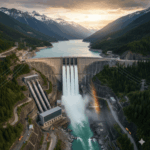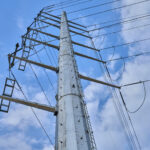We aim to be a Partner for sustainable change
India’s RE sector needs to be scaled up to mitigate the risks of climate change says, Tulsi Tanti, Chairman and Managing Director, Suzlon Group
India has an impending need to build renewable energy infrastructure to nurture its economic growth? What are your views on this?
According to International Energy Agency’s World Energy Outlook 2015 report, India has 237 million people with no access to electricity. The focus is on ensuring that the energy supplies are affordable, reliable, sustainable and available for all. The industry has attracted an investment of over $3.16 billion and the cumulative installations of the sector is about 64% of India’s total grid interactive renewable energy capacity. In the Union Budget, the government has announced its plan to provide 100% rural electrification by 1st May, 2018. This poses incredible opportunity for the renewable sector and to boost rural economy. The potential of renewable energy-powered off-grid solutions to stimulate clean energy output in the country needs to be harnessed and specifically to achieve rural electrification. Renewable energy has stepped into the limelight after COP21, followed closely by the need for energy efficiency. India’s RE sector needs to be scaled up to mitigate the risks of climate change. The government has already set the movement in the right direction with its positive policy framework and Make In India initiative
The present government has laid down ambitious plans to build India’s renewable energy infrastructure. Do you think the plans are achievable and what are the policy changes required to turn these plans into reality?
India’s wind energy sector has witnessed unprecedented acceleration last year, propelled by technology and conducive policy environment for renewables, by central and state governments. The growth was way higher than the industry estimates of 30% to 40%. FY16 was a historic year for the Indian renewable industry. Wind energy has surpassed all its previous records with ~3300MW installation. The previous highest installation was 3196MW in 2011. Technology and innovation will continue to be the catalyst for the wind industry growth. The wind-solar hybrid solutions, digitization of services, innovation in tower and blade technologies such as Suzlon’s 120 meter hybrid tower, Suzlon S111 WTGs are aimed towards making unviable wind sites available, ensuring better yield and increasing the capacity utilization factor (CUF). These disruptive technologies are bringing down the levelised cost of energy (LCOE) and ensuring affordable power for all.
Suzlon is one of the pioneers of wind power energy in India, with the government laying an ambitious target of 60 GW of wind power by 2022, are you geared up for the challenges?
We have committed during the RE-INVEST conference to the Prime Minister our plans on 16 GW of Renewable energy project during the five year period of 2015- 19. Over the past two decades, Suzlon has cumulative installation of over 15 GW out of which over 9 GW is installed in India. With over 18 years of market leadership, advanced technology, proven project execution capabilities, best-in-class services, Indian supply chain and manufacturing, experience in exporting WTGs globally and a strong, experienced management team, Suzlon is best positioned to cater to the high growth potential in its home market.
The Government has approved a national offshore wind energy policy, what are the advantages of offshore wind energy compare to inland? How is Suzlon going to benefit from this policy?
Wind power accounts for 14% of India’s total installed power capacity. There are no off-shore projects in India currently. However, India has 25,000 MW off-shore potential. The approval on the national off-shore wind energy policy marks an epoch in India’s renewable energy history. It once again demonstrates the government’s thrust and serious action towards harnessing the renewable energy potential of our nation. Also, it is a testament of the government’s intent and action to enhance the role of renewables in India’s energy security. With a coastline of 7600 kms, India has enormous off-shore wind energy potential and the Cabinet approval is a step in the right direction to unlocking this opportunity. Off-shore wind energy implementation requires fair amount of approvals from various departments. One of the key advantages of off-shore wind energy is that large size projects of 1,000 MW and above can be built with capacity utilization factor ranging from 45% to 50%. This also enables better utilization of transmission infrastructure and better dispatchability, with insignificant impact on land requirements. We foresee an off-shore wind energy revolution in our country; given India’s very long coastline. Suzlon has access to the most matured off-shore wind energy technology and we are currently conducting a techno-commercial feasibility study in Gujarat, India. The state is blessed with a 1,600 km coastline and we have already identified more than 1,000 MW off-shore wind energy potential along the Kutch coast. The first pilot off-shore project will be for 600 MW and is likely to come up in Gujarat in three to five years.
Suzlon has commissioned 900 MW wind energy projects in FY16. How does the company feel about the achievement and what are the expectations from this fiscal?
FY16 was a very promising year for the industry in which wind energy sector installed a total of over 3,400 MW in India, surpassing all previous installations records. Suzlon capitalized on the existing opportunities and installed 900 MW in India, recording over 100% growth surpassing the industry growth of ~47%. We achieved our highest quarterly volume of 443 MW in past 4 years and annual sales volume of 1131 MW which is 149% Y-o-Y growth.
Our key priorities for FY17 are achieve higher growth rate than industry which is expected to grow by 30% in FY17, concentrate on timely execution of strong order backlog of 1,243 MW from IPPs, PSUs, Corporates and Retail customers, focus on key states that display long term commitment to renewable energy, leverage technology to further optimize the product competitiveness, reduce costs and bring about a higher Return on Investment (RoI) for customers thereby reducing the LCoE, continue to provide best-in-class services and improve our OMS capabilities with digitization of services
AE-Rotar Holding redeemed bonds worth US$ 590 million and credit facility of equivalent amount has been procured with facilities being extended till 2023. Would this boost sufficient growth or you would be looking at more funding options
AE-Rotor Holding B.V (AERH) has redeemed SBLC backed Bonds of US$ 590.4 million which had a 4.969% coupon rate. We have also arranged a credit facility of equivalent amount from State Bank of India, London Branch and Export-Import Bank of India, London Branch, at coupon rate of 3.30% backed by the SBLC. This will results in ~ 60 crores saving annually as a result of retiring the old debt and taking credit facility at a competitive rate. We have successfully achieved turnaround of our operations and are now confident of further improving performance in FY17
Suzlon acquired certain small companies to implement renewable energy projects. What is the strategy behind this and would we see more small acquisitions in the near future?
Suzlon acquired 5 companies to implement various renewable energy projects across the country which also includes recently won solar projects in Maharashtra of 70 MW by Solar Energy Corporation of India (SECI). The companies acquired do not own any assets and have been acquired at face-value; accordingly, a nominal price of ` 5 lakhs only has been paid for the same. The purpose of acquisition is to shorten the time and process of setting up 5 new companies to execute our solar projects
What does order book look like for 2016-17? What are the major orders in the bag?
Our FY16 order book stands at 1,243 MW valued at ` 7,989 Crores. FY16 net order intake of 1,251 MW as compared to 375 MW in FY15; 69% of the order intake resulting from new products (S97-120m and S111-90m). Our Q4 FY16 order intake stands at 790 MW. Major orders bagged – 197.40 MW from a leading power utility, 105 MW maiden order from Greenko and 81.90 MW turnkey orders from new and existing customers
What are the major challenges for the renewable infrastructure growth in India?
The Indian government’s target of 175GW from renewables by 2022 can only be achieved if some of the key issues are addressed: availability of grid at state level needs to be adequate, for which Government needs to invest and accord reforms, important that long term FIT( Feed in Tariff) are in place as that would bring regulatory certainty and steady flow of investments from both domestic and international markets required for setting up wind energy projects, important to have a long term national uniform policy and regulatory framework for both investments and implementation, financial Institutions/banks should finance RE projects with a longer amortization schedule (viz. 20 years) and a debt: equity ratio of 80:20 in lines with international practice, push for strengthening the SME sector by encouraging them to invest in RE projects for their captive use through initiatives such as interest rebate of 5% on the investment made; this will help in freezing their energy costs and thereby make them competitive. This will truly transform India and would be a successful Make in India, GST for RE projects should be set at zero rate, this will lead to reduction in cost of energy and make RE affordable to utility & consumers.
When it comes to R&D Suzlon has been in the forefront in developing high-yield products, which are the products that were developed by Suzlon in the last fiscal for the wind and solar sector?
We recently opened a new Blade Science Center in Vejle, Denmark. The new center is focused on developing the best blades and control systems in the industry, and integrating Suzlon’s aerodynamic, loads and new structures research across the company
Aligned with the government agenda, we are striving for sustainable and affordable energy for all by focusing our R&D efforts on developing high yield products that effectively bring down the Levelized Cost of Energy (LCOE) and improve customers’ Return on Investment (ROI). This has resulted in two path-breaking products: The S97-120m (2.1MW) turbine with hybrid tower which ensures 12% – 15% higher energy generation over other turbines of the same capacity. Further, it also enables viability of low wind sites as has been witnessed by the recently achieved 35% PLF in the last 12 months at the Kutch wind park in Gujarat. The S111 (2.1MW) turbine prototype has been successfully tested in India and USA. In India it is amongst the few in its class to have the largest rotor diameter spanning 111.8 meter. Touted to be a potential game-changer in the industry with increased energy production by nearly 20%, S111 is one of the highest yielding IEC Class III wind turbine. S111 with a 120 meter hybrid tower is the latest from Suzlon’s 2.1 MW suite of products. The prototype is installed at Naliya, Gujarat. It employees highly reliable Doubly Fed Induction Generator (DFIG) technology, which enhances variable speed capacity by 30%. Compliant with the IEC design standard wind class IIIa conditions, the hybrid lattice tower WTGs are also available in a high temperature variant, up to 50â°C, for smooth functioning across all climatic conditions.










